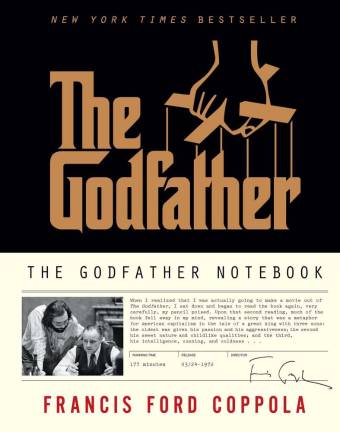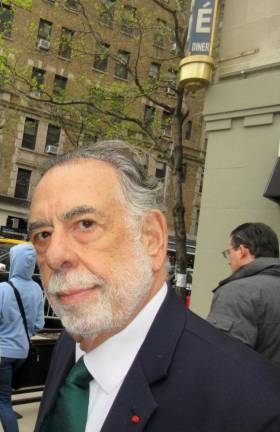The movie is regarded as Mario Puzo’s “The Godfather,” in tribute to the brilliant novelist who wrote the book that was adapted into the Oscar-winning movie of 1972. But the film version could be referred to as New York’s “The Godfather.”
The Corleones may have actually lived in Long Beach, out on Long Island, miles from the city, but they reeked of their New York roots. It’s unthinkable to imagine the Corleones representing Boston or Chicago or Kansas City. They are Noo Yawkers to the core. As we learned in the book and then in “The Godfather, Part II,” patriarch Vito Corleone settled in lower Manhattan, like so many immigrants.
The most vivid scenes in “The Godfather” took place in New York City, such as when Michael and his girlfriend Kay went Christmas shopping and stopped at a newsstand to read the horrible news of the assassination attempt on Vito Corleone. Then there was the scene when Vito was gunned down at a fruit stand. How many more can you name? Plenty, I bet.
As it turns out, it was hardly a coincidence that New York City played such a prominent role in the overall Godfather fabric. Francis Ford Coppola, the Oscar-winning director of the epic, said in an illuminating e-book, entitled “The Godfather Notebook,” that he had intended all along to have New York City serve as a character in the movie.
Coppola, who grew up on Long Island and had relocated to San Francisco by the time he got the job to direct the movie, had an auspicious vision for his film. Casting his mind back to his childhood, he envisioned the New York of the post-World War II era, when soldiers seemed conspicuous, especially in bus and train stations. Flushed with achieving a victory of the Nazis, New Yorkers had a bounce to their step. After fifteen years of suffering through the Great Depression and then sacrificing mightily during The War, New York was alive and feeling its oats. This was Coppola’s vision.
The St. Louis Corleones? Fuhgeddabout it!
But Coppola’s bosses at the Paramount studio had a very different idea for the movie. They hoped to make it rather inexpensively and fill up the cast with bankable, recognizable movie stars, such as Ryan O’Neal, fresh off his big-screen triumph as the preppie star of the very popular tearjerker, “Love Story.”
Paramount’s original script, which Coppola completely ignored, called for “The Godfather” to be filmed in St. Louis, hardly a sixth borough, to save money. The studio also wanted to give the movie a swinging 1970s feel, to bring in young viewers whom they fretted would be turned off by having to sit through a three-hour period piece. (Disclaimer: As someone who has taught his share of three-hour-long college classes of varying successful degrees, I can appreciate the trepidation of the Paramount brass.)
The suits needn’t have worried, though. Coppola’s vision meshed perfectly with the rhythms of America, which was reeling through the seemingly endless Vietnam War and the nation’s obsession to come, starting quietly in mid-1972: the Watergate scandal.
Coppola certainly understood that it would have been much cheaper to film “The Godfather” out of town. But he had a keen recognition that such a reckless decision would have robbed the film of its authenticity. It’s one thing to shoot the external New York scenes of a film like, say, “The Freshman” in Toronto. Moviegoers wouldn’t care, one way or the other.
Made in New York
But “The Godfather” belonged in New York.
Sure, it was hardly the first “mob” epic. Paul Muni starred in the original “Scarface” film in 1932. But the 1972 Godfather re-identified the genre of movies about organized crime.
It showed New York in a tense, moody setting, thanks to the Herculean efforts of Gordon Willis, its cinematographer. Willis stressed a shadowy look to the city, disdaining cheerful lighting. Not surprisingly, Willis became known in Hollywood as The Prince of Darkness.
The New York of “The Godfather” proved to be every bit as memorable and distinctive as the city in Woody Allen’s black and white classic, “Manhattan” (which, by the way, the remarkably flexible Willis also shot). There is something to be said for a movie that can capture a city and make it stand out as a major character.
“The Godfather” may have starred Marlon Brando, Al Pacino, Robert Duvall, John Cazale, Diane Keaton, Richard Castellano and Talia Shire (Coppola’s sister). But New York City deserved full billing, too.

